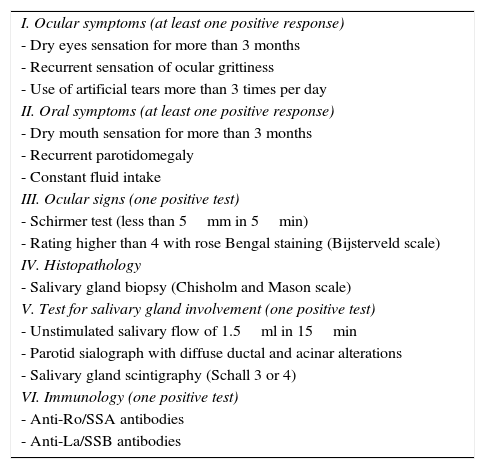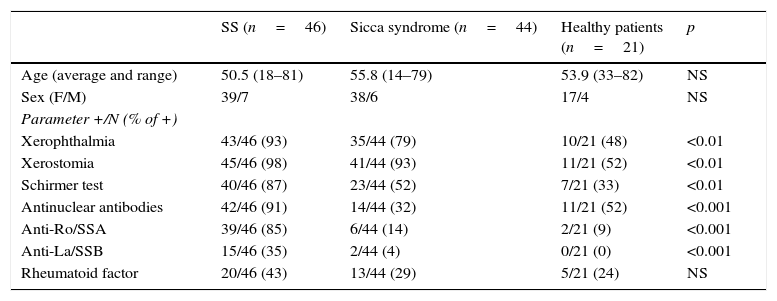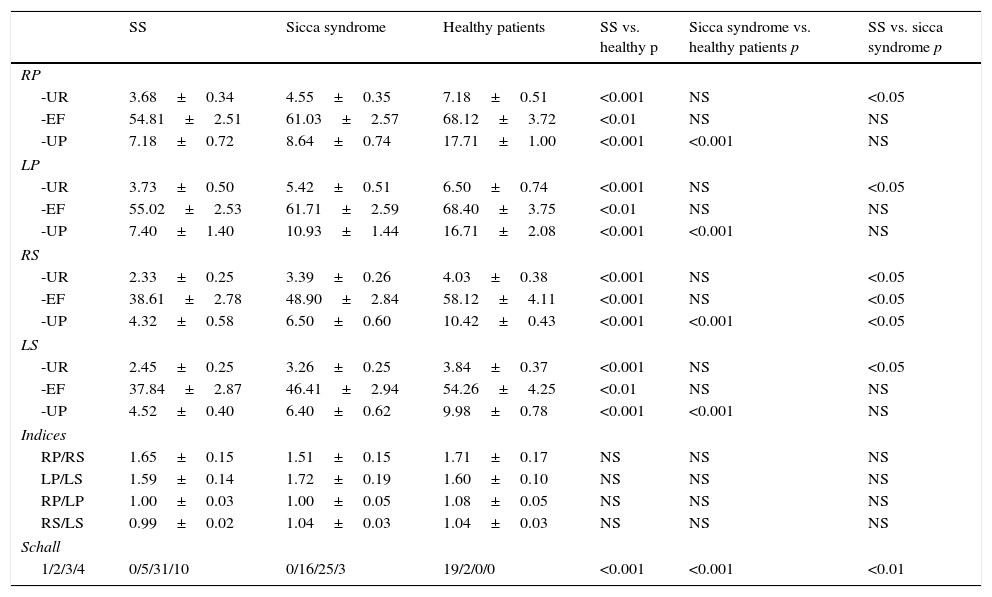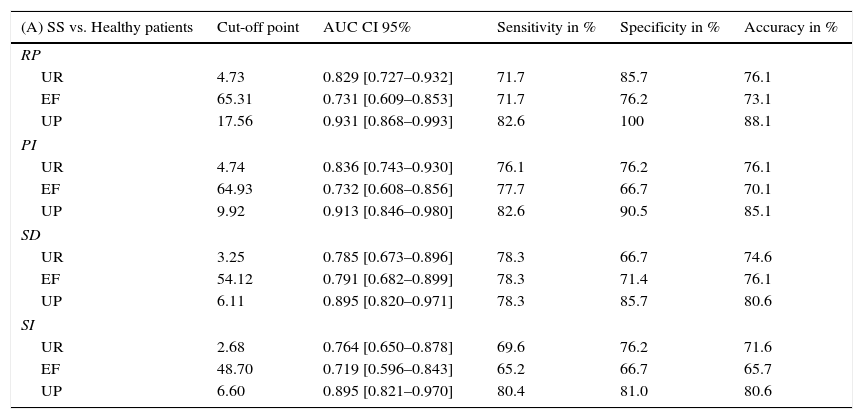The evaluation of the salivary scintigraphy is part of the classification criteria of Sjögren's syndrome (SS). The aim of the study was to determine a method of quantitative evaluation of this technique with easy application and high diagnostic accuracy.
Material and methodsA review was carried out on a total of 111 patients with clinical suspicion of SS, referred to our department over the last 4 years (94 women, range 14–82 years). Thirty-minute dynamic studies were performed after injection of 99mTc-pertechnetate, with secretory stimulus at 15min. After drawing regions of interest in both parotids, submandibular glands, and in the background, quantitative parameters were determined. These included the ejection fraction, uptake ratio at 15min, and the percentage uptake (PC). Based on the definitive diagnosis, the subjects were classified into patients with SS, with sicca syndrome, and healthy subjects.
ResultsSignificant differences were found between the SS group and healthy subjects in the 3 quantitative parameters for the 4 glands. Significant differences in the PC parameter were observed between the group with sicca syndrome and healthy subjects. ROC analysis showed that the best differentiation parameter for the 3 groups was the PC in both parotid and submandibular glands.
ConclusionsThe quantitative analysis of salivary scintigraphy has proved to be a useful method and easy to apply in daily practice to differentiate patients with SS from healthy subjects, with the PC, both in parotid and submandibular glands, being the parameter with highest diagnostic accuracy.
La evaluación gammagráfica de las glándulas salivales forma parte de los criterios clasificatorios del síndrome de Sjögren (SS). El objetivo del estudio fue determinar un método de valoración cuantitativa de dicha exploración de fácil aplicación y alto rendimiento diagnóstico.
Material y métodosSe revisó a 111 pacientes con sospecha clínica de SS remitidos a nuestro servicio en los últimos 4 años (94 mujeres, rango 14-82 años). Se adquirieron estudios dinámicos de 30 min en proyección anterior tras inyección de 99mTc-pertecnetato, con estímulo secretor a los 15 min. Tras dibujar áreas de interés en glándulas parótidas, submandibulares y fondo, se determinaron la fracción de eyección, tasa de captación a los 15 min y porcentaje de captación (PC). Basados en el diagnóstico definitivo se clasificaron en 3 grupos: enfermos con SS, con síndrome seco y sujetos sanos.
ResultadosSe encontraron diferencias significativas entre el grupo con SS y los sujetos sanos al comparar los 3 parámetros cuantitativos para las 4 glándulas. Solo se apreciaron diferencias significativas entre el grupo con síndrome seco y sujetos sanos en el PC. La valoración de las curvas ROC evidenció que el mejor parámetro de diferenciación entre los 3 grupos fue el PC, tanto en parótidas como en submandibulares.
ConclusionesEl análisis cuantitativo de la gammagrafía salival probó ser un método útil y de fácil aplicación en la práctica diaria para diferenciar a pacientes con SS de sujetos sanos, siendo el PC el parámetro más exacto tanto en glándulas parótidas como en submandibulares.
Artículo

Revista Española de Medicina Nuclear e Imagen Molecular (English Edition)
Comprando el artículo el PDF del mismo podrá ser descargado
Precio 19,34 €
Comprar ahora











